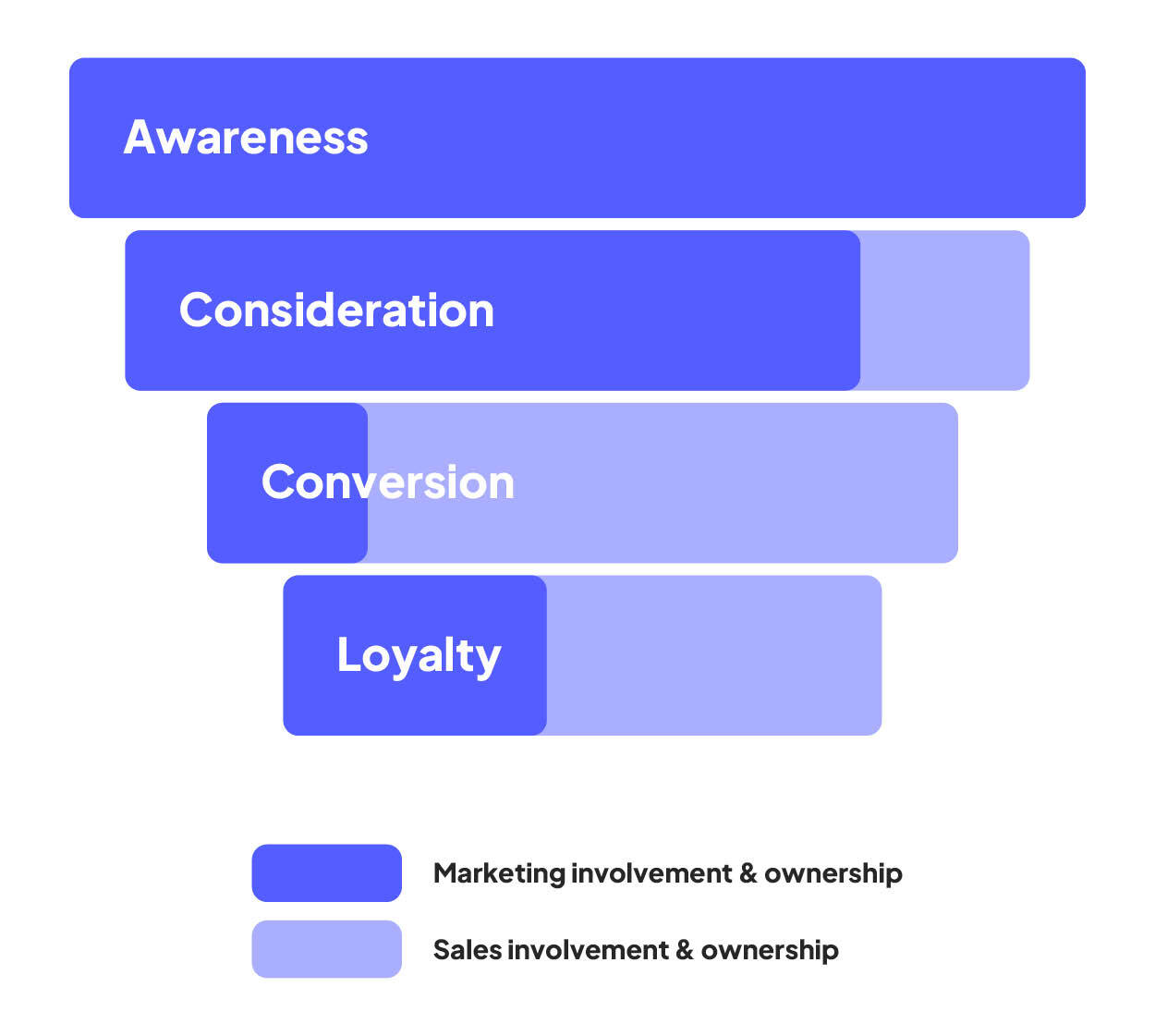We read some research about the state of sales and marketing efforts recently that horrified the onebite team, but if we’re truly honest? It didn’t surprise us.
Working with marketing stakeholders across an array of B2B tech and telco sectors, we often hear complaints from their counterparts in sales. “What are you doing for my region?” and “no-one has heard of our company” are regular protests among the corridors of the sales office whenever marketing are in earshot. Meanwhile, marketing are working hard to deliver numerous campaigns, trying to align with product, sales and keep the c-suite sweet. But no one seems happy, and company performance results dwindle.
Now we have data that confirms what we’ve witnessed for over 20 years. Marketing and sales are grossly misaligned. Research from LinkedIn’s B2B Institute found that the degree of alignment between marketing and sales is just 16%. What does that really mean? Only 16% of the people being marketed to by company X, are also being targeted by sales too. That is 84% of people either seeing marketing content and not contacted further, or receiving entirely cold outreach from sales.
That’s prospects who have engaged with company X, suggesting some degree of interest but are likely never followed up on and nurtured. That’s people who have never heard of company X, suddenly being hounded by the sales team to book a demo meeting because they dared to allow their details to be shared with third parties.
It’s no wonder that there is friction between marketing and sales teams. Both are facing increasing pressure to deliver results, and yet are pushing ahead in their own direction.
The ideal marketing and sales funnel
We don’t live in a utopia, but if we did, here’s what our ideal marketing and sales funnel would look like:

Awareness – at the top of funnel, marketing should target a broad audience and engage in activities that build brand awareness. This is where activities like PR and advertising are valuable, as they establish familiarity and credibility among your target audience.
Consideration – this is where a user may have started to engage in some of your marketing activities, such as visited your website, spoke to someone at a trade show booth or downloaded a gated online asset. In an ideal world, sales should start to get involved here, but only if your sales team can adopt a soft approach. Don’t risk scaring them off with trying to book a demo meeting and close a deal before the prospect is ready. A CRM system can be useful to ensure there is a single source of information that tracks touch points and engagement with the contact to avoid too much, or too little.
Conversion – at this stage the contact should largely be owned by the sales team, but marketing shouldn’t stop here. Providing you have those joined up systems and you are tracking how the lead is travelling through the stages of the funnel and what interactions are taking place, marketing can help support sales by reinforcing the same messages to aid conversion and providing the right enablement assets.
Loyalty – so often marketing is focused on acquiring net-new customers, and rightly so. Although the statistics vary according to which study you read, research is unanimous in the fact that maintaining an existing customer is far more cost effective than acquiring a new one. Working closely with sales (yes, can you sense a theme here?), marketing can play a pivotal role in reinforcing product USPs and positive brand image to help make those renewals far more likely.
You may have spotted a common theme across each stage of our ideal marketing funnel. Yes, it’s collaboration. That collaboration should involve regular flow of information between the two teams, sharing ideas and systems, and aligning processes. We talk about the funnel in a lot more detail here.
Laying the groundwork for better collaboration
If you’re now ready to storm into your Sales Director’s office with a plea for more collaboration, go equipped with a plan. Here are the top four areas to focus on as you start to build better alignment with your sales counterparts:
Process
Sit down with your sales team and discuss the funnel (feel free to borrow ours if it helps). Spend the afternoon putting yourselves in the shoes of an example customer, and look at their journey through the funnel to examine how marketing or sales efforts influenced each stage (or didn’t). This allows both teams to have a clear understanding of the process, and make plans to improve upon this moving forward. All too often, friction can be caused by misunderstandings as to the role of marketing versus sales. If you can get that straight from the beginning, you’ll start from a place of mutual understanding and respect.
Audience
Agree your target audience in the broadest sense possible. This is who marketing should target at that Awareness stage and should include multiple stakeholders at various levels , not just the C-suite decision makers who hold the purse strings. If the sales team have certain verticals they have seen success in previously, or specific companies they’d love to work with, use this to start to build an ABM approach.
Technology
Shared systems and flow of data are vital to help the two departments work well together. As a prospect starts to journey their way through the funnel, they could be potentially receiving materials from the marketing team, as well as receiving multiple requests from the sales team to set up a meeting. While there’s nothing wrong with this activity on its own, when you put both together, the prospect is likely to feel as though they are being hounded by your company. Put a CRM system in place that is linked to all of your marketing efforts and sales outreach to track which touchpoints they are receiving, and put some automated rules in place to ensure prospects are receiving the right level of contact in relation to their engagement thus far.
Culture
All of the above is great, but this approach must be ingrained into company culture to work effectively over time. This approach often comes top-down from senior leadership within your company, so work with them closely to get their buy-in on your approach to collaborate more with sales. KPIs can have a huge impact on culture and ways of working, so consider how sales and marketing KPIs can be aligned to ensure they empower collaboration, not incite resistance.
We’ve got experience taking sales initiatives and working backwards to develop marketing campaigns that support those efforts and deliver results for everyone. The Sumo Logic EMEA team were keen to target specific verticals, such as gaming and fintech for their continuous intelligence platform. Find out more about how we amplified this tactical sales effort through top of the funnel PR activity to deliver a cohesive message.
If you need a cohesive marketing strategy that works alongside sales, reach out to the onebite team of experts today for a free initial consultation.




